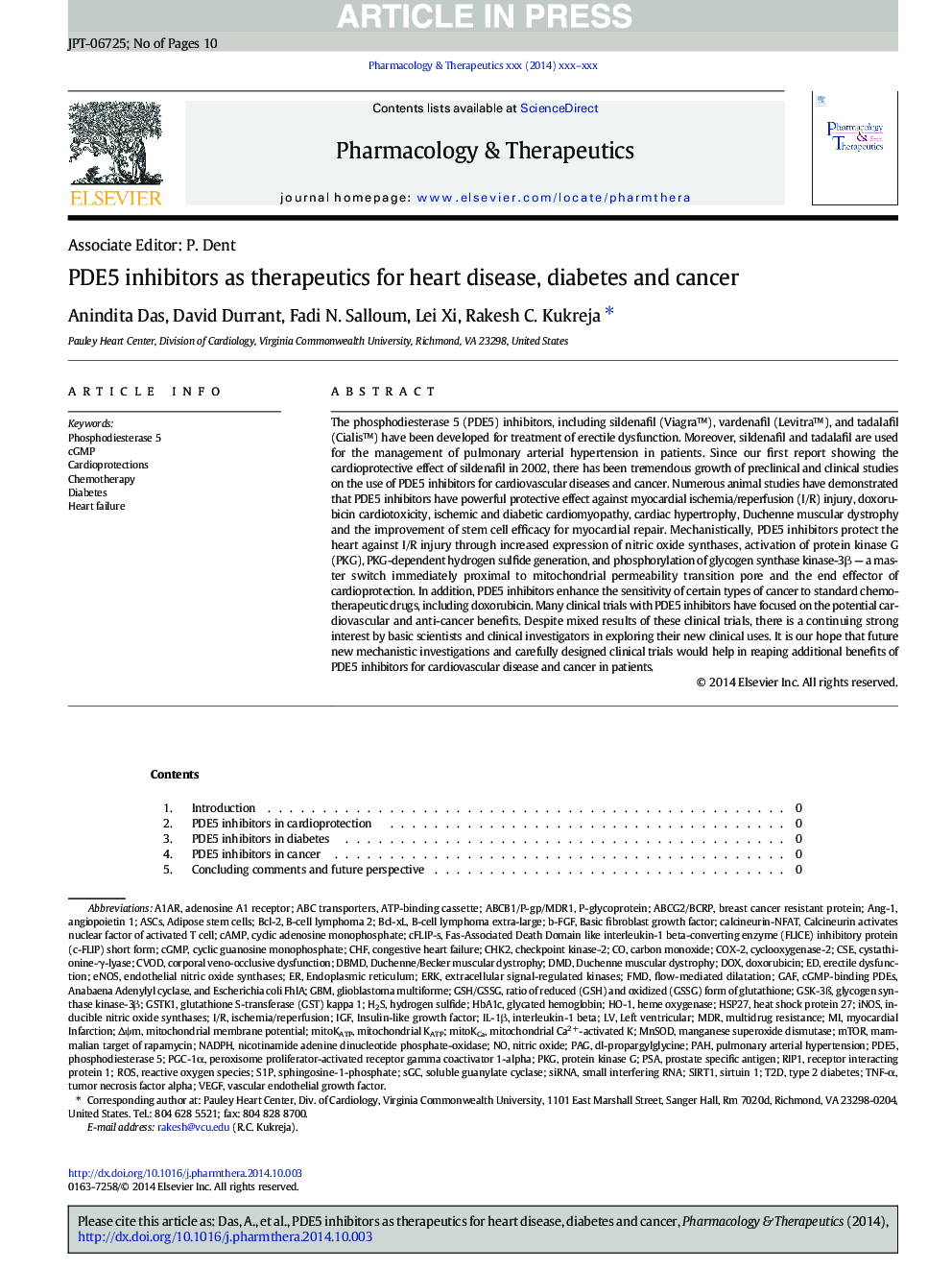| Article ID | Journal | Published Year | Pages | File Type |
|---|---|---|---|---|
| 5843958 | Pharmacology & Therapeutics | 2015 | 10 Pages |
Abstract
The phosphodiesterase 5 (PDE5) inhibitors, including sildenafil (Viagraâ¢), vardenafil (Levitraâ¢), and tadalafil (Cialisâ¢) have been developed for treatment of erectile dysfunction. Moreover, sildenafil and tadalafil are used for the management of pulmonary arterial hypertension in patients. Since our first report showing the cardioprotective effect of sildenafil in 2002, there has been tremendous growth of preclinical and clinical studies on the use of PDE5 inhibitors for cardiovascular diseases and cancer. Numerous animal studies have demonstrated that PDE5 inhibitors have powerful protective effect against myocardial ischemia/reperfusion (I/R) injury, doxorubicin cardiotoxicity, ischemic and diabetic cardiomyopathy, cardiac hypertrophy, Duchenne muscular dystrophy and the improvement of stem cell efficacy for myocardial repair. Mechanistically, PDE5 inhibitors protect the heart against I/R injury through increased expression of nitric oxide synthases, activation of protein kinase G (PKG), PKG-dependent hydrogen sulfide generation, and phosphorylation of glycogen synthase kinase-3β - a master switch immediately proximal to mitochondrial permeability transition pore and the end effector of cardioprotection. In addition, PDE5 inhibitors enhance the sensitivity of certain types of cancer to standard chemotherapeutic drugs, including doxorubicin. Many clinical trials with PDE5 inhibitors have focused on the potential cardiovascular and anti-cancer benefits. Despite mixed results of these clinical trials, there is a continuing strong interest by basic scientists and clinical investigators in exploring their new clinical uses. It is our hope that future new mechanistic investigations and carefully designed clinical trials would help in reaping additional benefits of PDE5 inhibitors for cardiovascular disease and cancer in patients.
Keywords
HSP27HO-1COX-2cGMPBcl-2ERKiNOSeNOSIL-1β∆ψmGBMChFFMDGAFHbA1cDMDBcl-xLmitoKATPABCG2/BCRPmitochondrial KATPMDRendothelial nitric oxide synthasesGSTK1B-cell lymphoma extra-largeIGFDOXASCsb-FGFH2SCSECHK2A1ARcAMPcystathionine-γ-lyaseGSH/GSSGI/RP-glycoproteinAng-1Adenosine A1 receptorCyclic adenosine monophosphateMyocardial infarctionangiopoietin 1Erectile dysfunctionischemia/reperfusionInterleukin-1 betaLeft ventricularABC transportersDoxorubicinDuchenne/Becker muscular dystrophyDuchenne muscular dystrophyFlow-mediated dilatationadipose stem cellsinducible nitric oxide synthasesHydrogen sulfideCyclooxygenase-2endoplasmic reticulumbasic fibroblast growth factorInsulin-like growth factorB-cell lymphoma 2Multidrug resistancecarbon monoxidecyclic guanosine monophosphatecongestive heart failureGlycated hemoglobinheme oxygenaseMitochondrial membrane potentialHeat shock protein 27breast cancer resistant proteinATP-binding cassetteextracellular signal-regulated kinasesGlioblastoma multiformeGlycogen synthase kinase-3β
Related Topics
Health Sciences
Pharmacology, Toxicology and Pharmaceutical Science
Pharmacology
Authors
Anindita Das, David Durrant, Fadi N. Salloum, Lei Xi, Rakesh C. Kukreja,
